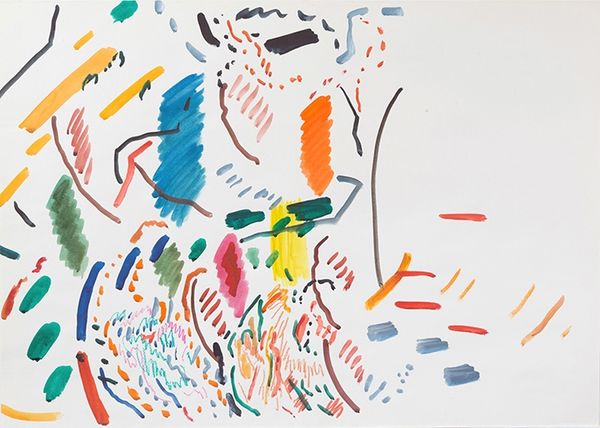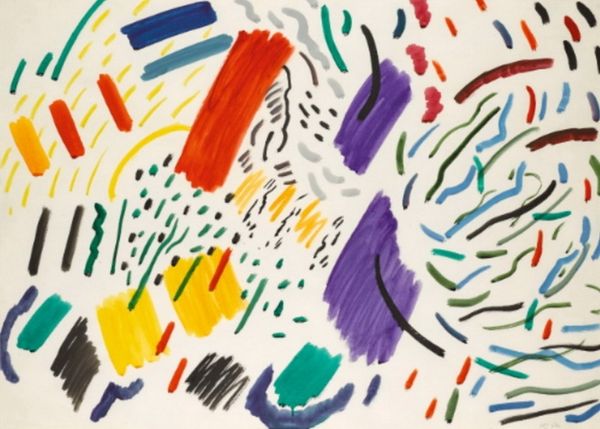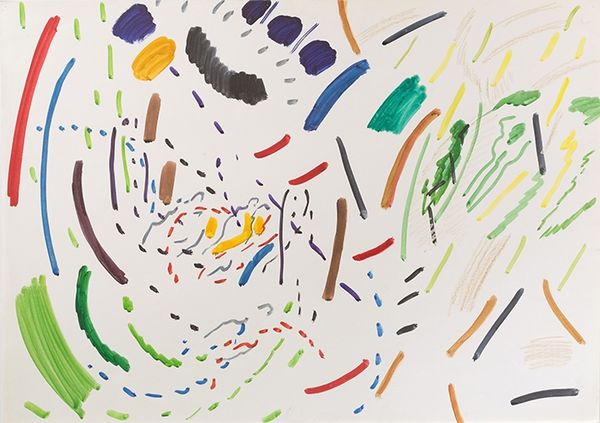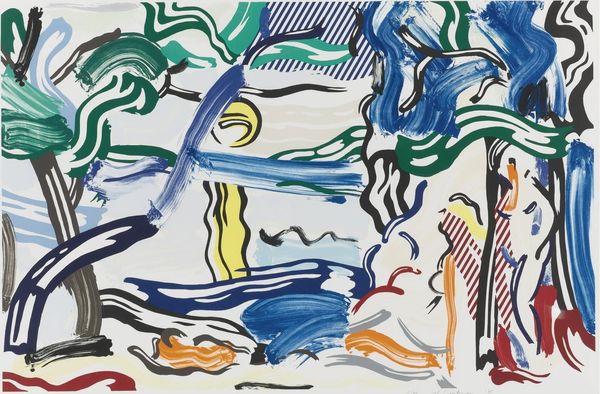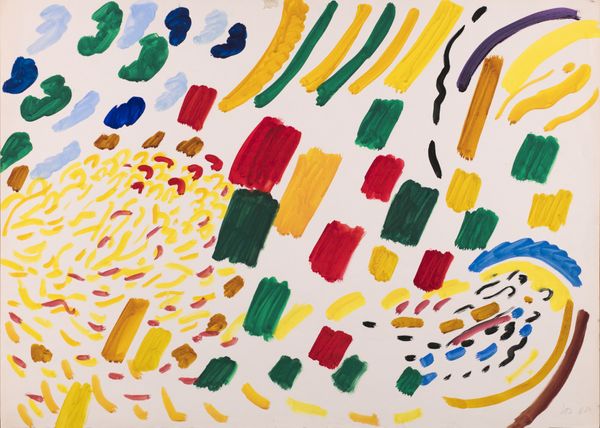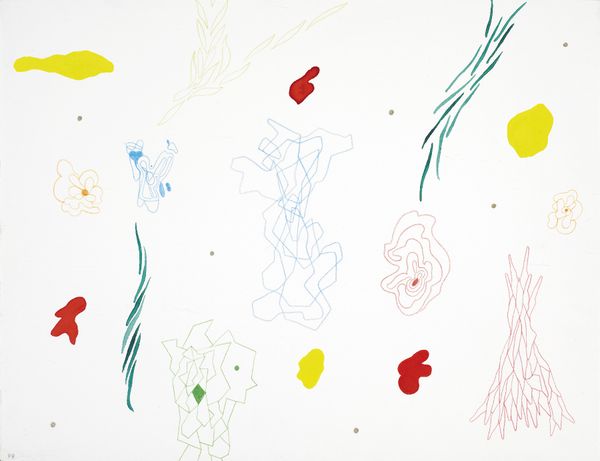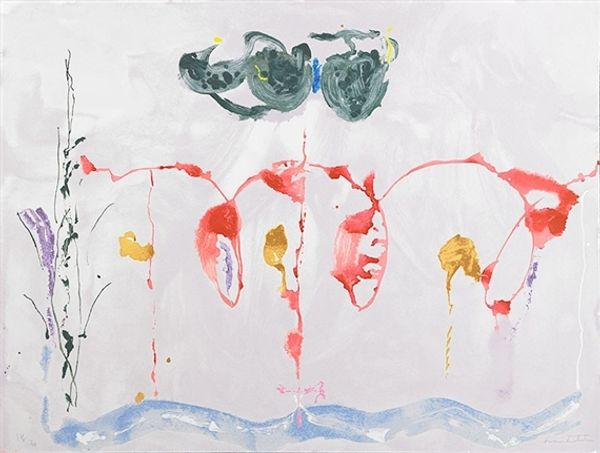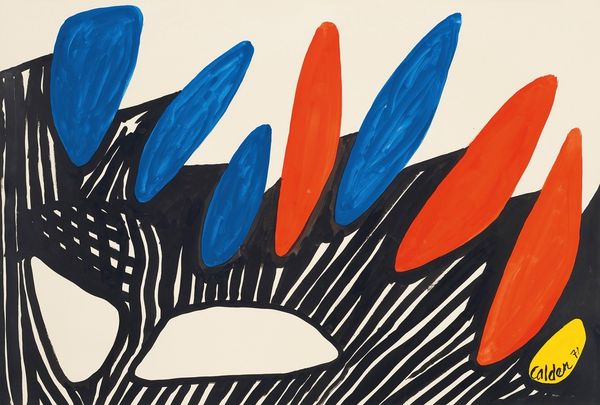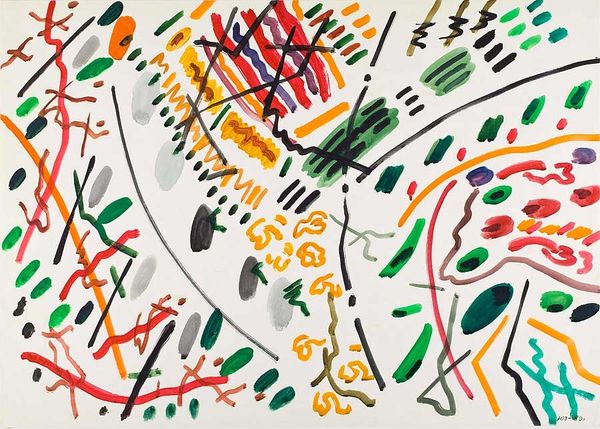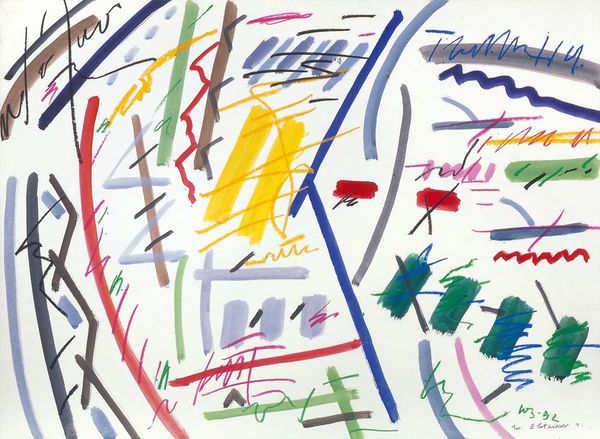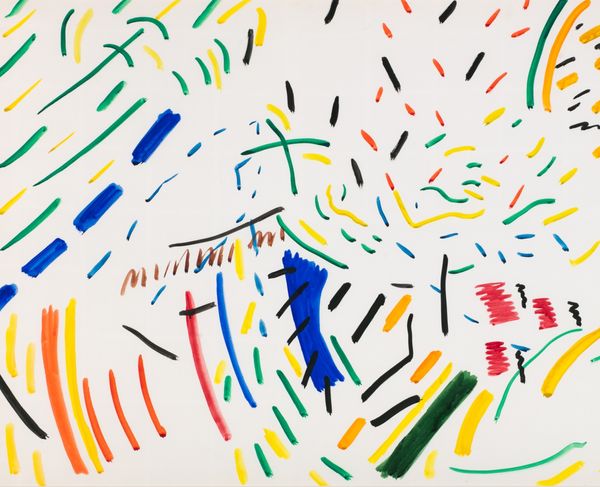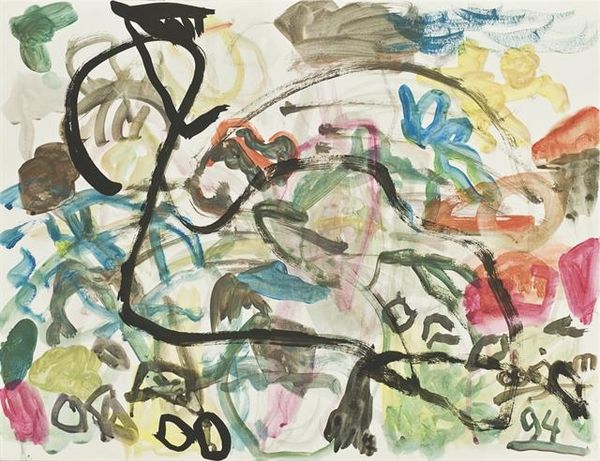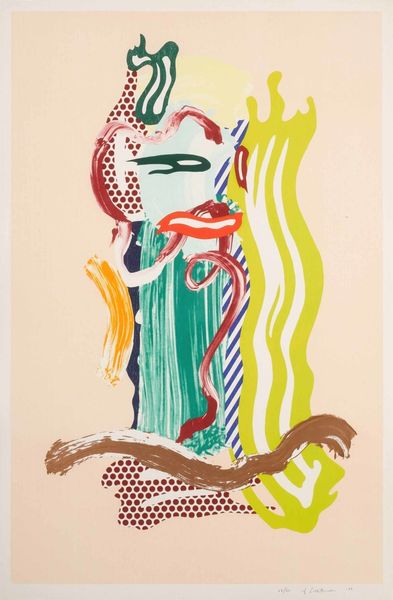
Dimensions: 61 x 86 cm
Copyright: Yuri Zlotnikov,Fair Use
Editor: This is "Rhythm. Space. People," a painting by Yuri Zlotnikov from 1997. It seems to be made of very simple brushstrokes, almost doodles. The colors are bright, but they don't necessarily seem harmonious to me. It’s visually very active. How would you approach this work? Curator: Let’s consider this piece not as a representation of something, but as the physical result of the artist’s actions and the materials he employed. What kind of labor do you think went into this, considering the repetitive, almost automatic marks? Editor: I guess it looks spontaneous, so maybe not a lot of traditional labor. But there's still the physical effort of applying the paint repeatedly. Is that what you mean? Curator: Precisely. The artist's choice of a seemingly effortless technique, juxtaposed with the inherent physical act of painting, suggests a commentary on the value of labor itself. Look at the unblended colours and raw brushstrokes. What kind of mass production contexts, if any, do these details suggest? Editor: Hmm, like industrial production? I’m not sure, it seems too… unique for that. It makes me think more of textile design, but even then it's not really a manufactured process. More like handcrafted design perhaps? Curator: I agree. Zlotnikov pushes us to reconsider craft. The work blurs distinctions between ‘high’ art and more ‘pedestrian’ forms of material production, and reveals new dimensions through process. This invites scrutiny of what we consider valuable within visual culture, not to mention questions about our own acts of consumption. Editor: That makes sense! I hadn’t thought about it like that, how the deliberate use of materials and visible labor affects how we value art. Thanks for that fresh insight. Curator: Indeed! Focusing on the material and processes always reframes how we perceive a work and its cultural significance.
Comments
No comments
Be the first to comment and join the conversation on the ultimate creative platform.
